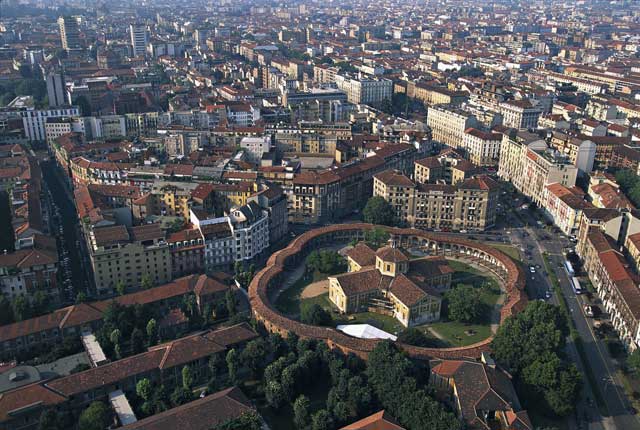The Experts' Guide To The World: Milan

The classic tourist trail through central Milan starts at Il Duomo, the incomparable Gothic cathedral and the piazza and Galleria that abut it, then heads north-east via Monte Napoleone, where all the fashion boutiques are, to the Gallery of Modern Art, housed in a late-18th-century stately home, and the Giardini Pubblici, the city centre's best park. If you've seen those, you can't say you have done Milan, but you have taken a significant bite.
A few metres south-east from this well-trodden track is a rectangle of streets that amounts to a little jewel-box in the heart of the city, where none but the best-informed – the overwhelming majority Italian, and most of those probably from Milan – ever venture.
It's known as the Zone of Silence, being tucked away from the traffic of Corso Venezia, and it is a corner of the city centre where you find a sort of cross-section of the city in evolution as it shook off the Middle Ages and found a remarkable modern identity.
As the neo-classical grandeur of the ex-Villa Reale, now the Gallery of Modern Art, reveals, not long ago this part of the city was the gracious inner suburb of the landed aristocracy. Their grand houses were set among elaborate gardens and woods, with hunting grounds in easy reach. Then the Industrial Revolution arrived, the city outskirts were colonised by factories, and the barons realised the land their estates sprawled across had become very valuable. Around the end of the 19th century, one of these venerable clans, the Serbelloni, decided to cash in, hanging on to their noble house and a parcel of land behind it but putting the rest up for sale.
The developers arrived – and as this was a particularly fertile moment in the history of modern architecture, the zone became a laboratory for the new styles.
The pearl at the centre is Villa Necchi on Via Mozart, which is now owned by FAI, the Italian equivalent of the National Trust. It is well worth a visit: entrance plus guided tour costs €8. The house became suddenly better known a couple of years ago when it was the very stylish centrepiece of the film I Am Love, starring Tilda Swinton. A masterpiece of the Italian Rationalist style, it was designed by Piero Portaluppi for the Necchi sisters, members of a sewing-machine dynasty from the nearby town of Pavia, who decided they had had enough of being big fish in that small pond and wanted to try out Milan for size. The result, built between 1932 and 1935, was a miniature stately home for the new industrial aristocracy, bravely modern in its clean lines and rejection of ornament, and compensating for the plainness of its forms with extravagant use of beautiful marble and wood. In I Am Love, the house becomes a symbol of the brittleness and emotional inadequacy of the capitalist class, but in the flesh the combination of sensual richness, lavish comfort and formal purity, restored to its original state by FAI, is simply seductive.
If Necchi is the jewel, with its open-air swimming pool and tennis court and a restaurant open for lunch, also not to be missed are the wildly inventive apartment blocks that sprang up on the former Serbelloni land, in particular Palazzo Fidia, over the road from Villa Necchi, a fabulously eclectic work by Aldo Andreani, a masterpiece of post-Modernism 50 years ahead of its time, and the post-Gothic grotesquerie of Palazzo Berri Meregalli a couple of hundred metres away on Via Cappuccini, dripping with gargoyles.
Peter Popham is Italy correspondent of The Independent
Join our commenting forum
Join thought-provoking conversations, follow other Independent readers and see their replies
Comments